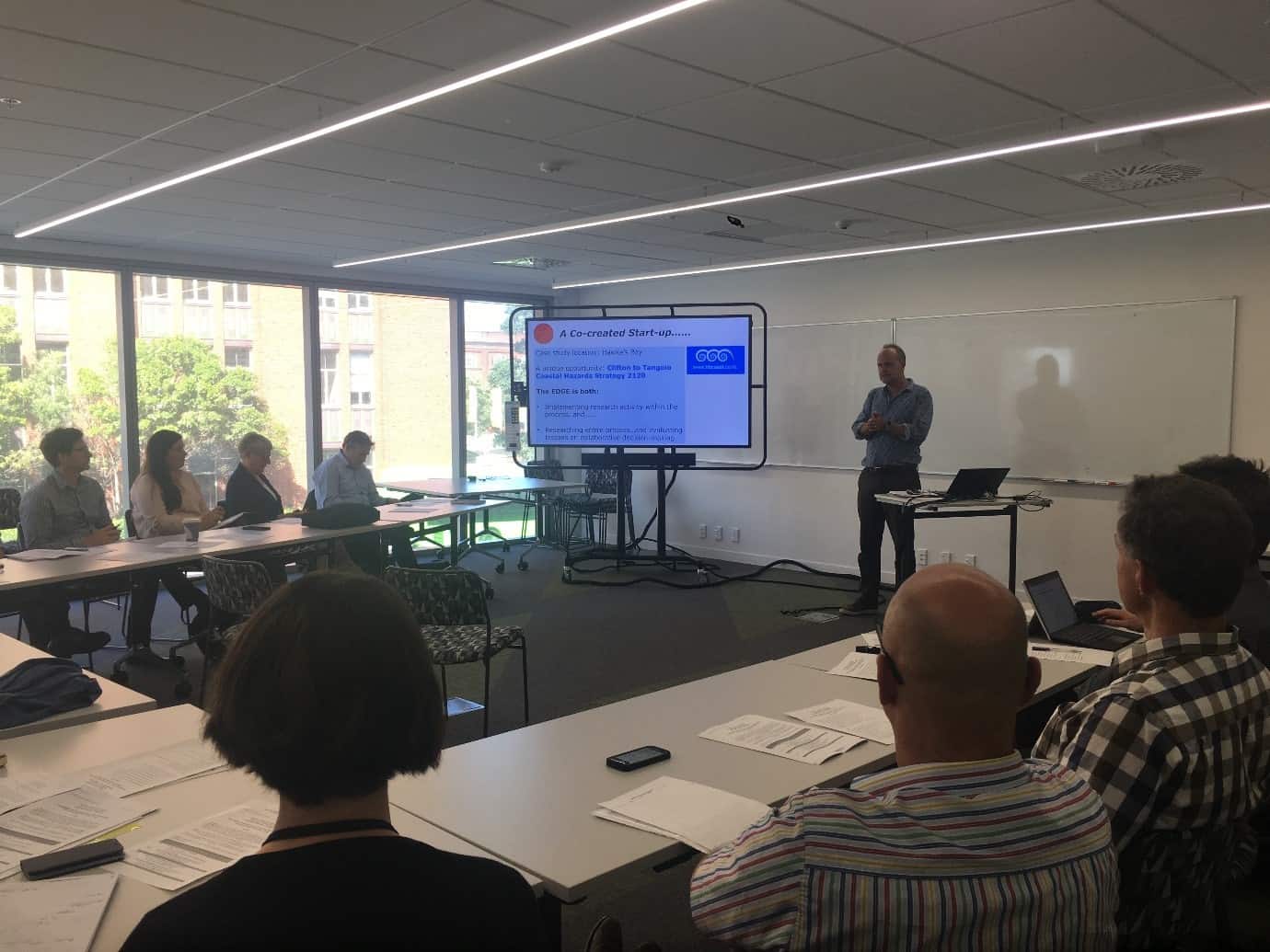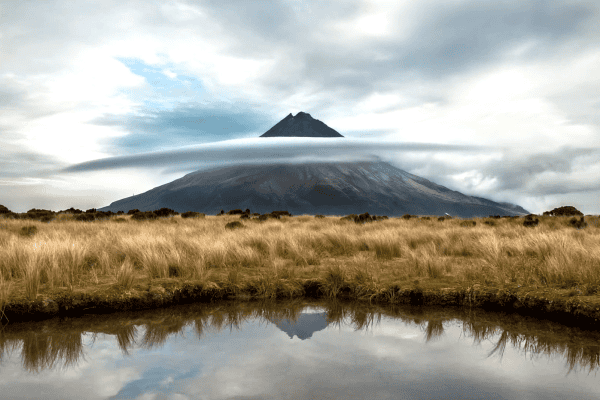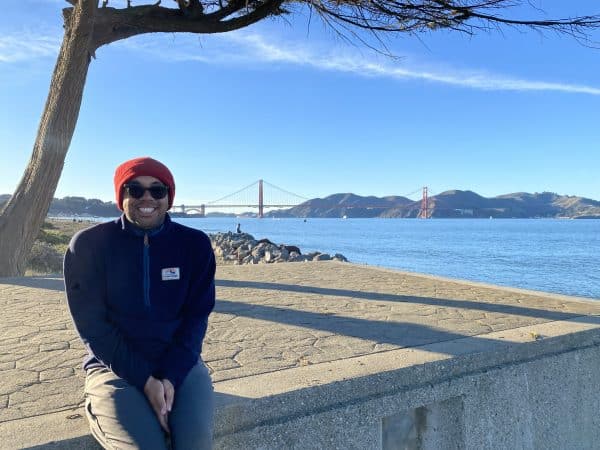Co-creating resilience solutions to coastal hazards
29/05/2018
By Emma Ryan
New Zealand’s coastal communities are at increasing risk from natural hazards in the face of climate change. Sea-level rise has waves lapping at their doorsteps, while the threat of tsunami presents itself whenever a nearby fault-line or subduction zone produces and earthquake. We need to plan for and deal with this changing risk now and over the coming century, which will mean developing ways for communities to adapt. However, a major challenge we face is trying to ensure that these adaptation pathways are both effective and well-suited to the coastal communities that they will impact. One of the ways that we are doing this is by co-creating interdisciplinary knowledge on coastal adaptation between scientists, regulatory authorities and communities.
What is co-creation?
Co-creation is where scientists work together with stakeholders and communities to jointly produce research that is useful for everyone. Instead of relying solely on researchers to lead a project, co-creation allows for input from people with a range of knowledge and experience. For example researchers will be familiar with the science, while stakeholders have a good idea of what will and won’t be feasible to implement, and communities have an understanding of what is needed by the people who will be affected by the research. Having these diverse groups shape the research results in a project that is more likely to produce useful outcomes that are beneficial for all parties.
The term co-creation has become prominent in resilience and environmental management research, but there isn’t consensus on how researchers should be going about it. No one quite knows how to most effectively co-create research projects with stakeholders and communities. TheLiving at the Edgeresearch team have recentlyutilised a co-creative research approach, and their project is the first example in New Zealand of a co-created research programme that aims to increase the resilience of communities to coastal hazards. By exploring the co-creation processes that occurred during the early stages of their project (i.e. the first seven months) we can tease out some insights into the complexities underpinning co-created resilience research in New Zealand.

Creating successful co-creation
Co-creation is a versatile and malleable process, and can differ considerably between projects. The key factors that aided in the success of the Edge project’s co-creation process in the early stages were twofold. First, it was important to develop an open-framework initial research proposal. This was developed by an interdisciplinary group of researchers, and allowed flexibility to explore co-creation possibilities.Second, they needed early and direct engagement with local government and other key stakeholders (local communities, key infrastructure and interest groups) in Hawke’s Bay, the chosen case study location for the research. This was achieved through 18 meetings during the seven-month start up period to discuss the Edge research and scope how it could be co-created with stakeholders.
Co-creation requirements
So what did they find? After critically analysing the start-up phase of the research it became clear that co-creation relied on a few important factors:
1.Building trust and familiarity with everyone involved early on. It was important that stakeholders were familiar with the research team they would be collaborating with, and it was also important that the research funders felt comfortable with the process and trusted the other parties.
2.Having a key contact and core facilitator to be the first point of contact between researchers and stakeholders. This made the process much smoother, encouraging dialogue between the two parties.
3.Having the flexibility to allow for major shifts in the detailed research objectives, proposed research activities and timelines. This included flexibility of the researchers themselves, as well as having adaptive research methodologies, and a non-prescriptive research proposal (which demanded flexibility of the research funder). The whole idea of co-creation is that it involves actors and stakeholders in a part of the process that they would not generally have influence in. This can result in a much more useful end product, but it can also heavily disrupt the status quo. Without flexibility in all aspects of the project the co-creative process won’t be able to reach its full potential.
Allowing co-creation to occur
There is no doubt that co-creation has the potential to positively impact a research project. By allowing stakeholders and communities to have a voice in the planning and implementation of the research we are able to co-produce a product ideally suited to everyone. However, how exactly co-creation is best carried out remains somewhat of a mystery. The Edge team have attempted a co-creative process in their recent project on coastal resilience in the Hawke’s Bay, and have been able to shed some light on some of the process’s complexities. Basically, from the researcher’s perspective, the co-creation requires trust between all parties and flexibility in the research. This will ensure that everyone is able and comfortable to make valuable input and that the resulting project can be adjusted to meet everyone’s expectations and needs.



